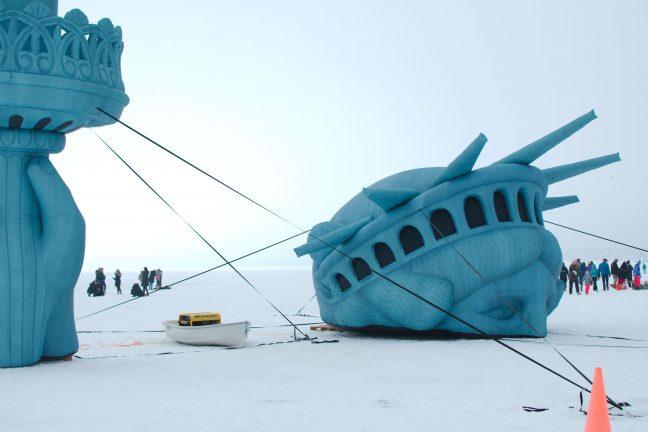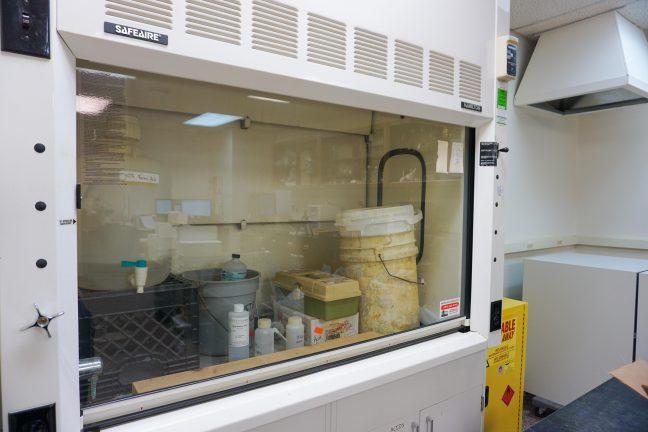On days like this past Sunday, March 8, many University of Wisconsin students noticed they felt different. As though they were lighter — a weight had been taken off their shoulders. They felt an overall sense of joy that they hadn’t felt in months.
Though many students had a great day, this phenomenon is a sign of a serious and more deep-rooted issue with our mental health.
According to the National Institute of Mental Health, “Seasonal Affective Disorder (SAD) is a type of depression that comes and goes with the seasons, typically starting in the late fall and early winter and going away during the spring and summer.”
Signs and symptoms can be anything ranging from low energy and sleep problems to changes in appetite and weight. Also noteworthy is the list of attributes that may increase the risk of SAD. People at an added risk of SAD include females, those living far from the equator and young adults. Thus, these variables are the perfect storm to leave UW students at a higher risk of SAD. This is a widely recognized and legitimate disorder, with lots of research on how young adults in cold climates are affected.
The mind matters: Student mental health important to achieving academic success
In his blog, Dr. Norman Rosenthal cites that, “in a study of schoolchildren in Maryland, my colleagues and I found that by the time the students reached their senior year of high school, 1 in 20 had full-fledged SAD … though college students have not been studied systematically, my guess is that they probably suffer in higher numbers.”
SAD is most definitely prevalent on our campus because of the length of our winter season. But, I have an additional hypothesis, that there is an added stress on cold climate university students — intermittent nice weather days followed by long stretches of returned chilly weather intensifies cases of SAD.
Long stretches of endless cold, gray weather undeniably have an effect on students’ mental health. When the temperature skyrockets and the sun comes out, students are overjoyed and outside all day. This makes it all the more devastating to return to libraries and classrooms when over the next few days temperatures drop, the sun hides away and the windchill comes back.
Symptoms of SAD are elevated with changes in movement habits and increased workload. After a day of enjoying the outdoors, students are often forced to catch up on overlooked work and sit for hours in a dark library. I think it is safe to say that a gloomy view out a College Library window only adds to the guilt and anxiety provoked by that lost time.
Many students may brush this off as just feeling bummed about bad weather, or just a reality of living in the Midwest, but it is imperative to acknowledge that repetitive behavioral and cognitive impacts of season change are serious and scientifically confirmed as a legitimate disorder.
Luckily, there are ways to change the stigma of SAD, combat the symptoms,and get work done while still taking in the few nice days we UW students get. Midwest Health suggests four main techniques:
- Light therapy — By sitting next to “specialized light boxes” for 30 to 90 minutes, your brain will increase production of serotonin and epinephrine, thus boosting your mood.
- Physical exercise — working out indoors will still trigger your brain to produce endorphins, which will “enhance your outlook and relieve stress.”
- Relaxation exercises — “mind-body practices like yoga, tai chi and meditation” are tried and true stress relievers, which may prove to decrease depression symptoms.
- Medication — This includes both herbal and prescription anti-depressants. Both should not be taken before consulting doctors first.
School is hard and is only made more frustrating when we see our friends at coastal schools studying in the sunlight. So remember, if you think you have feelings of SAD, many of us have been or still are there and trying to navigate the symptoms and tactics. Find what makes you feel happy, and if you are stuck trying to do so, here are a few more resources —
- UHS Mental Health Services — Group Counseling
- Text the Depression Hotline
- SAD natural light boxes — How to find one and Amazon options
Here’s to a longer stretch of warmer days and an increased proactiveness in fighting SAD.
Emma Axelrod ([email protected]) is a sophomore studying political science and journalism.














